Fix: SSL Connection Error
If you are a regular internet user then you will most likely see the SSL Connection Error. Even if you haven’t seen this error, you may encounter it in the future. This error comes up while accessing websites and prevents you from accessing the website from your browser. The error isn’t specific to a website or a browser. You might see this error only on Google Chrome while some users might see it on all of their browsers. This isn’t specific to a website as well. Although a lot of users complained about seeing this error on Google related websites like Google.com or Gmail but there are plenty of people who see this error on other websites like Reddit etc. So, it can happen on any browser and for any website. The error also comes and goes. The error isn’t constant as well. This means that you might be able to access the website for a while, after refreshing, and then start seeing this error again. So, this error might come and go.
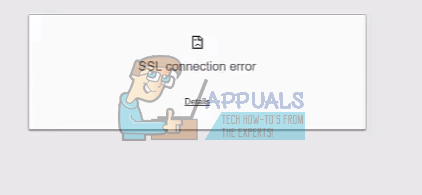
There are plenty of things that can cause this issue. The most common cause of this is the incorrect time and date settings but it can be because of a problem in the SSL Certificate or a mismatch between the certificate and the domain name. It can also be caused by a browser problem if the problem is only in one browser. A lot of the times it is also caused by your anti-virus program that keeps scanning and blocking the website because of the SSL Certificate. Lastly, it can be because of malware as well which isn’t that rare. There are, of course, many other reasons that might cause this issue but these are the most common ones.
Also, keep in mind that the problem can be on both the server or on your end. But, we will only discuss the solutions that can be done on your computer.
Tips
Before diving deep into the methods that are listed below, there are a few things that you can try to see if the problem gets solved. These might or might not work for you but these steps only take a few minutes so they are worth a shot.
Clear Browser History:
- Open your browser
- Press and hold CTRL, SHIFT and DELETE key simultaneously (CTRL + SHIFT + DELETE)
- Check the options Browsing History, Cache and Cookies. Select the time frame from the drop-down menu. Try to select the time frame before the problem occurred.
- Select Clear Browsing data
Reset Browser:
Google Chrome
- Open Google Chrome
- Click on the 3 dots (top right corner)
- Select Settings
- Scroll down and click Advanced
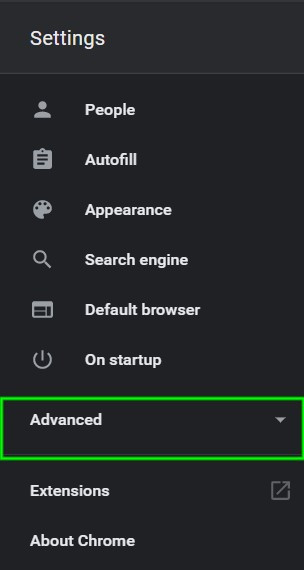
Open Advanced Chrome Settings - Select Reset
- Click Reset again to confirm
Mozilla Firefox
- Open Mozilla Firefox
- Click on the 3 lines on the top right corner
- Select Help menu (the question mark icon)
- Select Troubleshooting information
- Click Refresh Firefox
- Select Refresh Firefox again
Use a VPN: Using a VPN to access the website has worked for a lot of users. Although this isn’t a solution, it is a workaround that can be useful if you have some important things to do on the website that is showing the error.
Use Private Browsing: This has also worked for a few users. Try to access the website from a private window. This can usually be done by click on the 3 dots (in case of Google Chrome) or 3 lines (in case of Mozilla Firefox) from the top right corner of your browser. You can then select the New Private Window option.
Update your Browser: Make sure your browser is updated to the latest version available. Mostly, the browsers will automatically update itself but you can also check for any updates manually. The option varies from browser to browser but you will have to go to 3 dots > Settings > About > Check for updates
Method 1: Time and Date Settings
The problem might be caused by incorrect time and date settings. Even if your time is correct, make sure the date is correct as well. It is very easy to correct the time and date so follow the steps given below.
- Hold Windows key and press R
- Type timedate.cpl and press Enter

- Select Change date and time. Now set the date and time. Click Ok once you are done.

- Make sure that the correct time zone is selected. If the correct time zone isn’t selected then click Change time zone and select the correct one from the drop-down menu. Click Ok

- Click Ok again
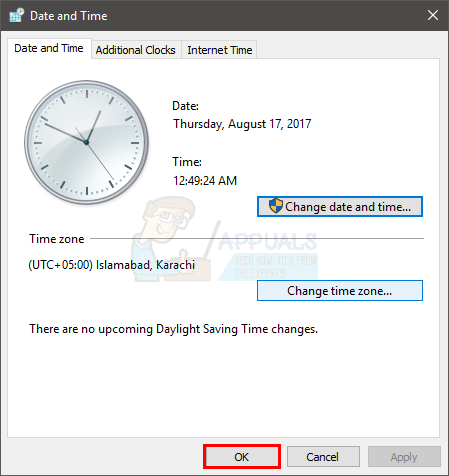
Now your time should be correct and it should solve the problem.
Note: If your time is incorrect every time you log on to your computer then the problem might be in your CMOS battery. It is the battery that keeps your clock running when the computer is turned off. Replace the battery if the problem is because of the time and your time is changed on every startup of your system.
If the problem isn’t solved yet then try to reset the browser that you are using. Resetting the browser is the equivalent of the factory reset. It will restore your browser to its fresh state without affecting your passwords or bookmarks etc.
Google Chrome
- Open Google Chrome
- Click on the 3 dots (top right corner)
- Select Settings

- Scroll down and click Advanced

- Select Reset

- Click Reset again to confirm
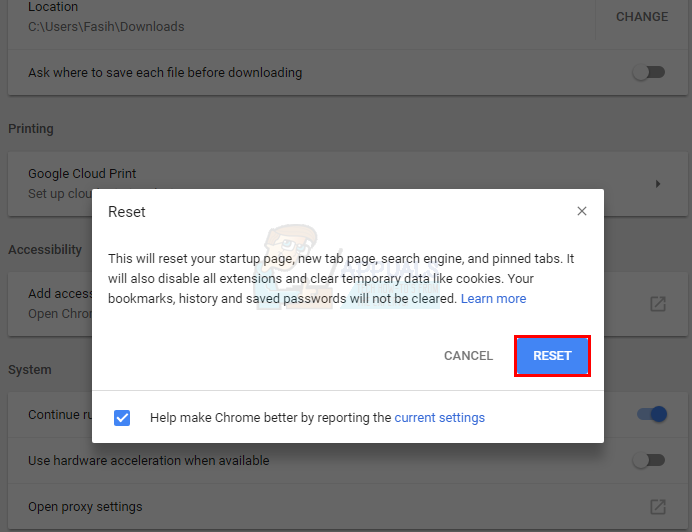
Mozilla Firefox
- Open Mozilla Firefox
- Click on the 3 lines on the top right corner
- Select Help menu (the question mark icon)
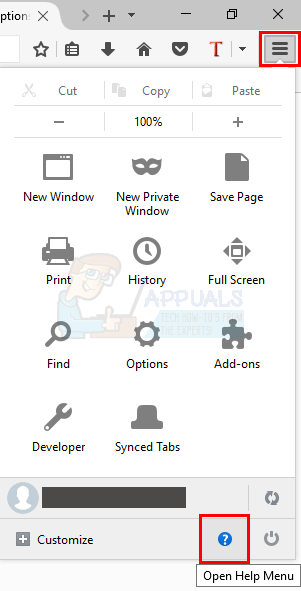
- Select Troubleshooting information
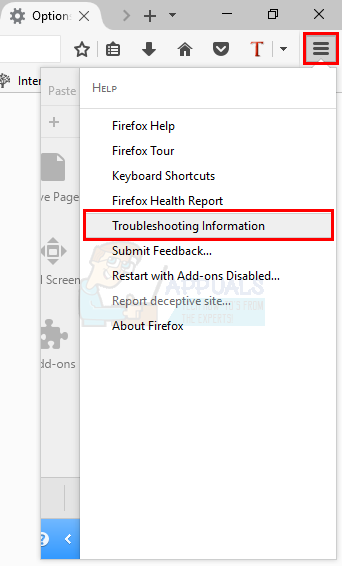
- Click Refresh Firefox

- Select Refresh Firefox again

Once done, restart your computer and check if the problem is solved.
Method 2: Google Chrome Flag (Only applicable for Google chrome)
If the problem is happening on Google Chrome or if you are using Google Chrome then the problem can be solved by a “setting flags” in the properties of your Google Chrome.
Note: Setting this flag isn’t recommended so do it at your own risk. These flags are meant for testing purposes and aren’t suitable for permanent solution. However, if you want to solve the problem then go for this method but at your own risk.
Follow the steps given below
- Locate the Google Chrome application shortcut on your desktop.
- Right-click the Google Chrome icon and select Properties

- Make sure the Shortcut tab is selected.
- Type \chrome.exe-ignore-certificate-errors at the end of the text in Target Make sure the additional text is within the main quotes of the Target text.
- Click Apply then select Ok
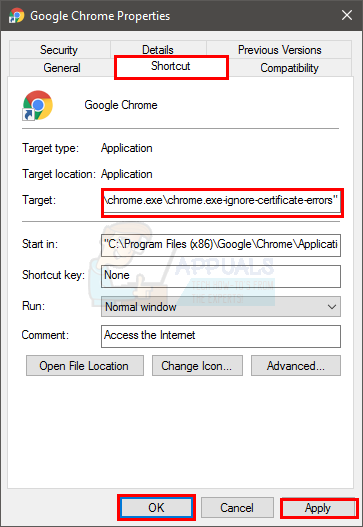
Now, open your Google Chrome and check if the problem is gone or not.
Method 3: SSL Behavior Override (Only applicable for Mozilla Firefox)
Note: This method will change the settings of Mozilla Firefox to ignore the SSL Certificate warnings. This can be harmful to your system especially if you access an unsafe website. There are a lot of websites that use fake certificates to trick visitors. These websites will try to steal important information from you. Your browser recognizes the fake certificates and prevents you from accessing websites like these with the error message. So, changing the settings of your browsers to ignore these warnings is not recommended. But, the steps for this are given below for anyone who still wants to go through this and knows what he/she is doing.
Since you are getting the SSL Certificate warning and your browser is preventing you from accessing the website, you can always turn off the features and ignore the warnings. There is a flag in Mozilla Firefox that can be modified to control the SSL related warnings.
The steps for changing these settings are given below
- Open Mozilla Firefox
- Type about: config in the address bar and press enter
- You will see a warning message. Click I accept the risk!
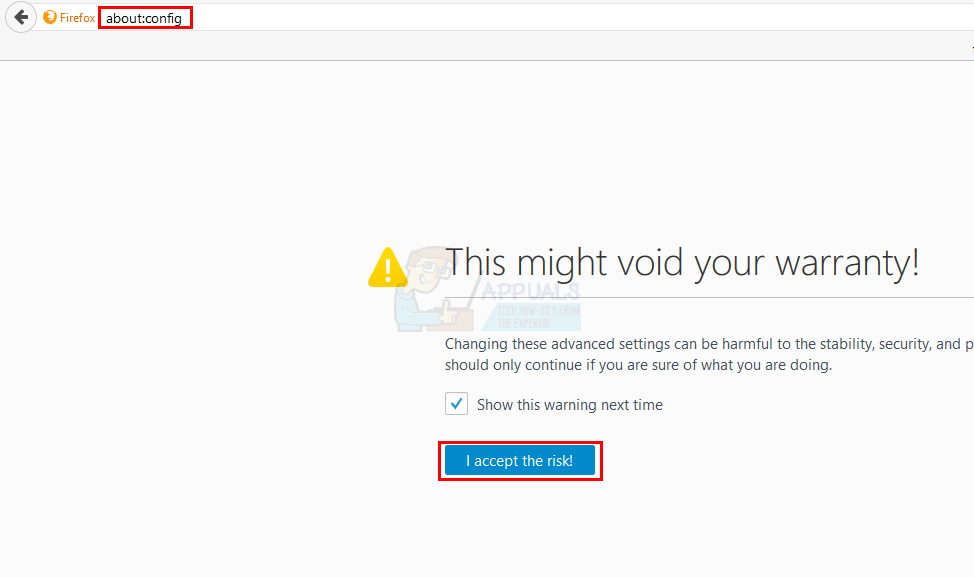
- Type ssl_override_behavior in the search bar
- Double click the ssl_override_behavior entry (there should only be one entry)

- Change the value from 2 to 1 and click Ok

Now, relaunch your browser and try to access the problematic website again. You should be able to access it now.
Method 4: Change Security Level
Changing the security settings of your browsers also seems to work for a lot of users. The steps for changing the security level are given below
- Hold Windows key and press R
- Type inetcpl.cpl and press Enter
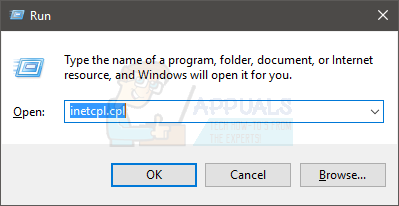
- Select the Security tab
- Move the slider to the middle where it says Middle-High This slider should be in the Security level for this zone section. If the slider was already in Middle-High then move it below to the Medium state
- Click Apply
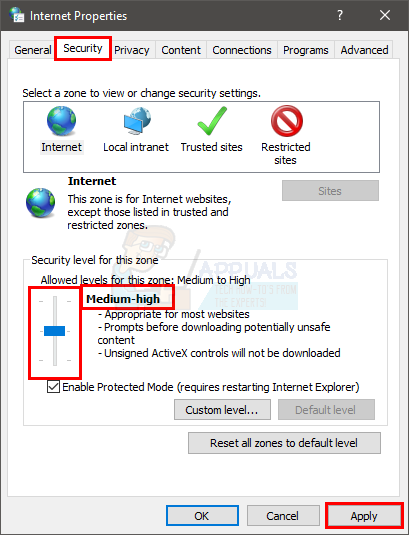
- Now, select the Content tab
- Click Clear SSL State
- Once the process is done, click Apply then select Ok

Now, try to check if the problem is resolved or not.
Method 5: Disable SSL Scan Option
Antivirus programs are most likely the cause behind this issue if nothing else worked. Usually, antiviruses have the SSL scan option enabled which lets then scan the websites for outdated or misconfigured or unsafe SSL certificates. Since there problem is because of the SSL Certificate, your antivirus program might be blocking the website that you are trying to visit.
There are a few things that you can do here. You can either turn off the SSL Scan option in your antivirus program or completely disable the antivirus for a few minutes to check whether the problem is gone. If the problem gets resolved when you disable the antivirus then it is a clear sign that antivirus was behind it.
You can click on your antivirus icon from the system tray (right bottom on your desktop) and select disable. Some of the antiviruses give you multiple options of disabling the program e.g. disable for 10 minutes or disable until you restart. You can select any of the options. Since there are a lot of antivirus programs and all of them work differently, you might not see these options here. In this case, you can just double click the antivirus icon and disable it either from the general screen (if you see the option) or by going to the settings. You can also just disable the SSL Scan from settings and then check if the problem appears or not.
Method 6: Malware
Although it isn’t the first thing that comes to our minds, the problem might be caused by some malware. A lot of the users did solve the problem by scanning and getting rid of the malware. If your computer is infected then the intruder might try to redirect you towards some other website with an insecure SSL Certificate. This might be what’s causing the SSL Certificate error for you.
Even if the chances of malware are slim, it doesn’t hurt to scan your system with a decent antivirus/antimalware program. We will recommend Malwarebytes that is a well-known malware detector and is recommended by many. Go here and download Malwarebytes for your system. You can download the free version. Once downloaded, run the Malwarebytes and scan your system for any problems.
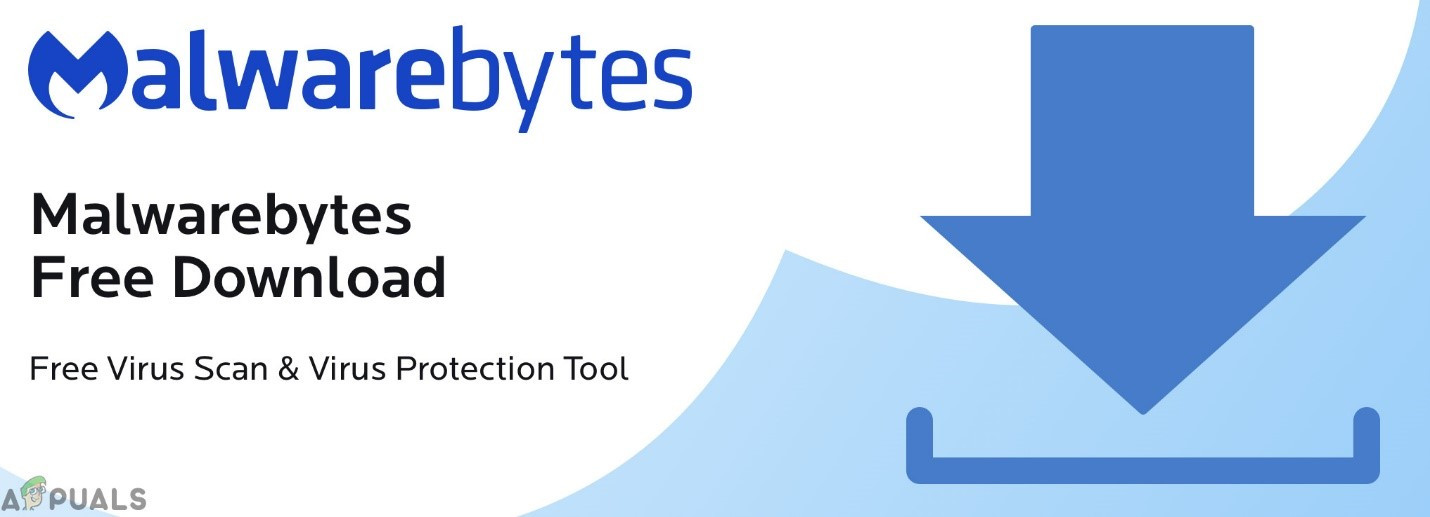
If Malwarebytes finds any infections then remove those and then try to access the website again.
Method 7: Export/Import SSL Certificates
Exporting the SSL Certificate of a website and then importing it back to the browser has worked for a few users. So, if nothing else worked then it is time to do the export and import of a website’s SSL Certificate.
You will need to view the certificate before exporting/copying it to a file. Since the steps for viewing and, therefore, copying the certificate varies from browser to browser, we will cover the steps for exporting these certificates for each browser.
Google Chrome
- Open Google Chrome
- Open the website that you are getting the error on. Even if it can’t open, just enter its address in the address bar and press Enter
- Click on the 3 dots (top right corner)
- Go to More tools and select Developers tools

- Now, the website should have a new section with programming and various other things on it. Locate and click on the Security tab from the newly created section window. If you can’t see the Security tab then click the double arrow button (more button) from the newly created section window.
- Click View certificate

- Click Details tab
- Click Copy to File…
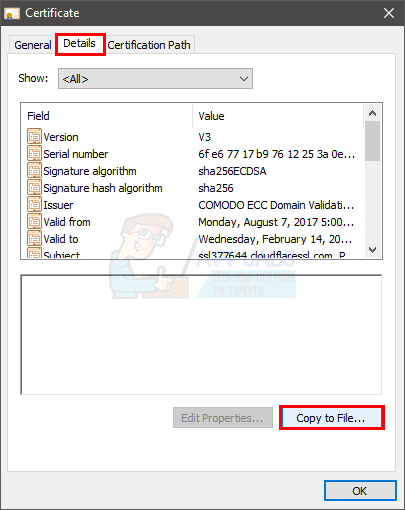
- A new wizard will open. Click Next

- Click Next Leave the settings as they are by default

- Click Browse and navigate to the location where you want to store the file. Name the file and click Save
- Click Next
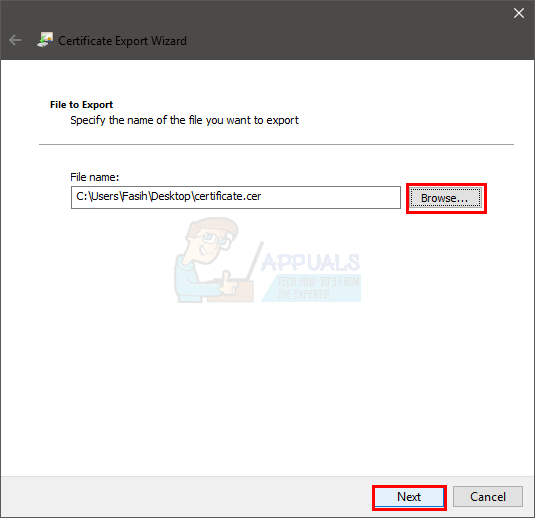
- Click Finish
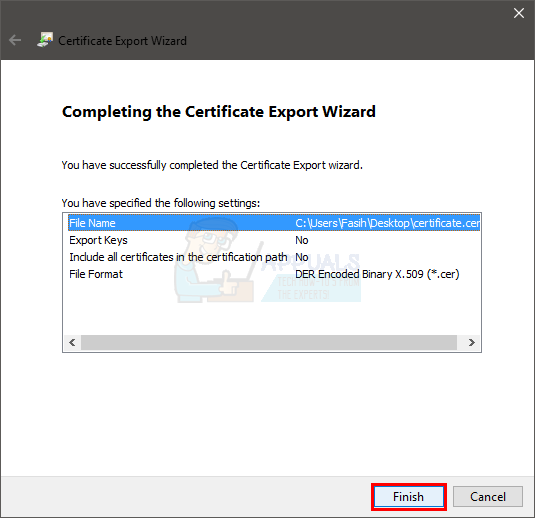
- You should be able to see a new dialogue. Click Ok

- Close the window
- Click on the 3 dots (top right corner)
- Select Settings

- Select Advanced

- Click Manage Certificates in the Privacy and Security section

- Click Import

- A new wizard should open. Click Next

- Click Browse and navigate to the location where you stored the SSL Certificate file and select it. Click Open
- Click Next

- Select the option Automatically select the certificate store based on the certificate
- Click Next

- Click Finish and Click Ok when the import is finished

- Restart your browser
Now, try to access the website again and see if the problem is solved or not.
Mozilla Firefox
- Open Mozilla Firefox
- Open the website that you are having trouble with.
- Click on the padlock on the left side of the website’s address (in the address bar)
- Click the arrow pointing towards the right
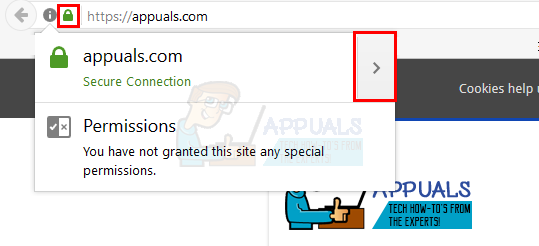
- Click More Information

- Click View Certificate
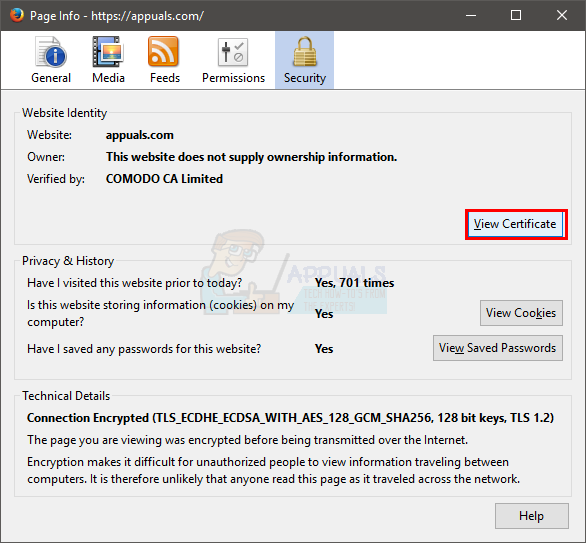
- Select the Details tab
- Click Export…
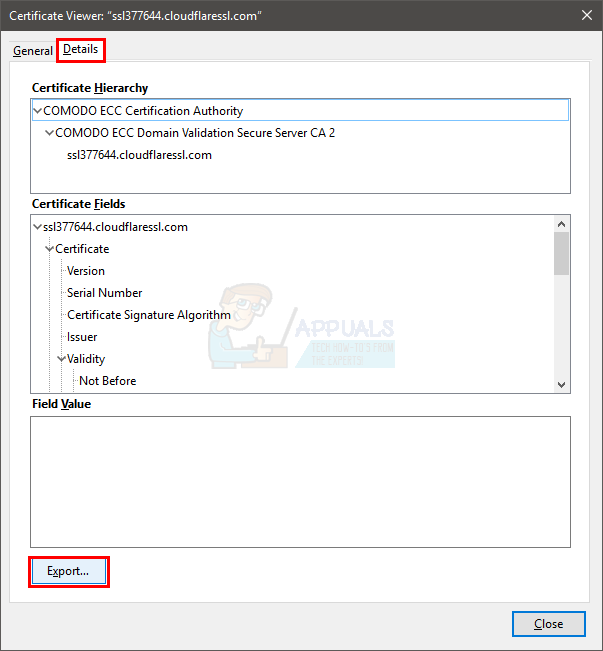
- Navigate to the location where you want to export the file. Name the file and click Save

- Click Close
- Close the Page Info window as well
- Click on the 3 lines on the top right corner
- Select Options

- Click Advanced
- Click Certificates
- Click View Certificates

- Click Import

- Navigate to the location where you exported the certificate and select it. Click Open
Restart your browser once you are done and check if the issue is resolved.
Microsoft Edge
Unfortunately, there isn’t any way to look at the certificates in Microsoft Edge.
Method 8: System Restore
If nothing else worked then you can try to restore your system to a previous state. This should be done if you are sure that the problem is from your end. You can check this by trying to access the website from another machine or your computer. If your system is the only machine that can’t let you access the website then the problem must be on your end. So, in this case, doing a system restore will solve the problem if the problem was caused by anything that happened on your computer. Try to remember the first time when the problem occurred and try to restore Windows to or before that time. This will, of course, only work if you have a restore point saved on your system. Hopefully, you have set your computer to periodically create restore points.
Follow the steps given below to perform the system restore
- Hold Windows key and press R
- Type rstrui and press Enter.

Run rstrui Command - The system restore wizard should start. Click Next

- Select the restore point that you want to go back to and click Next

Follow any additional on-screen instructions. Once your system is restored, you should be good to go.
Method 9: Try a Different Network
ISPs deploy different techniques to control web traffic and or restrict access to several domains/types of traffic. There is a chance that your ISP is blocking your internet access which might be causing the issue at hand. In that case, trying a different network may solve the problem. If no other network is available, you may use your mobile phone’s hotspot.
- Switch to another network/mobile phone’s hotspot.
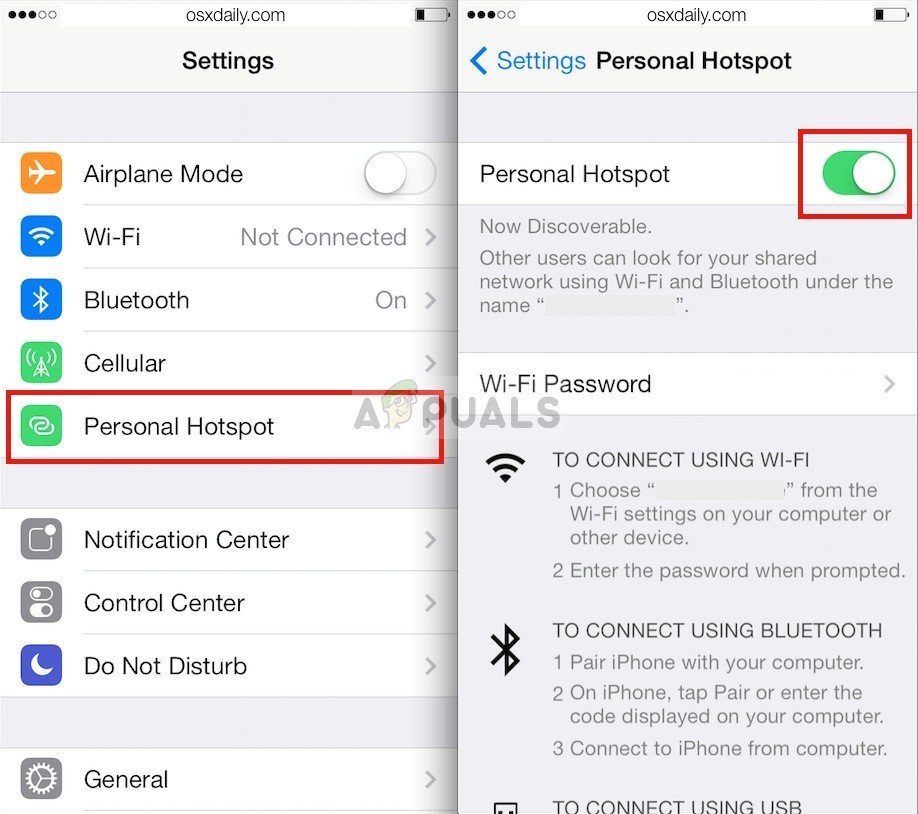
Enabling the personal hotspot inside mobile device - Now access the website to check if it is clear of the SSL error.
Method 10: Temporarily Disable Antivirus/Firewall
In today’s lawless world wide web, antivirus/firewalls play a very vital role in the security of your system. But sometimes, these applications create hindrances in the operation of genuine software and their network traffic which can be the reason for the current SSL error. In that case, temporarily disabling antivirus/firewall may solve the problem.
